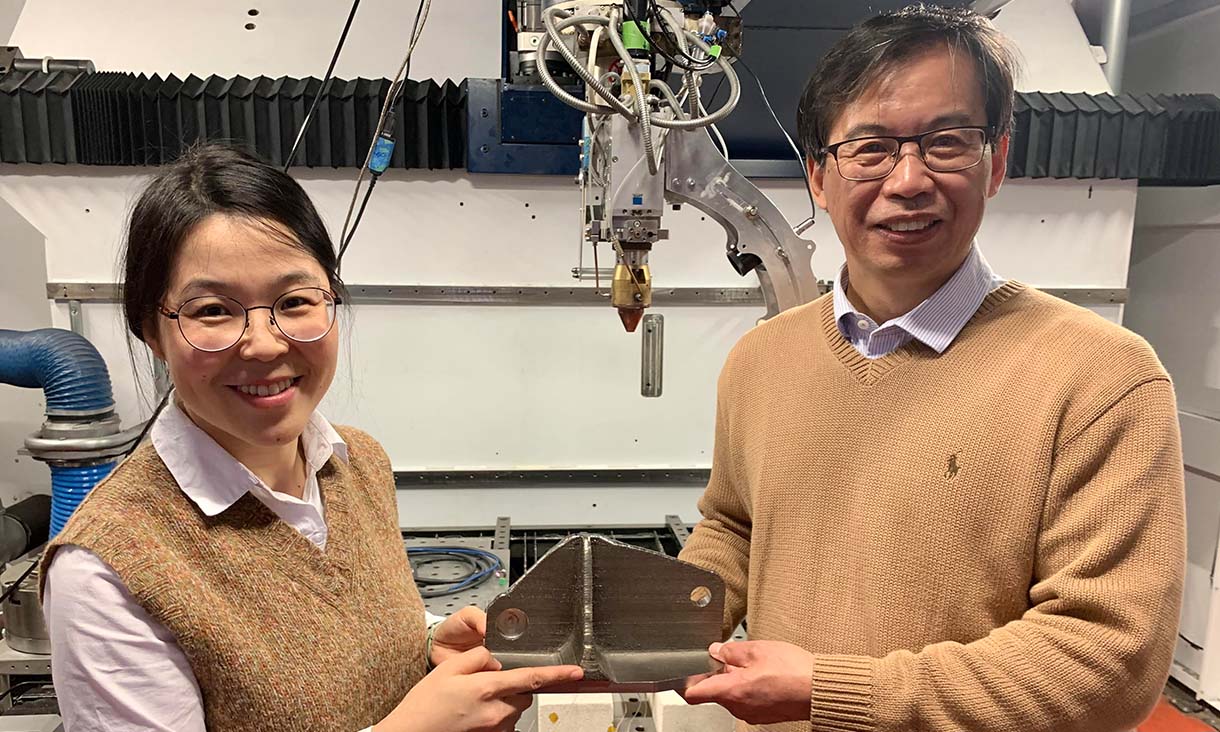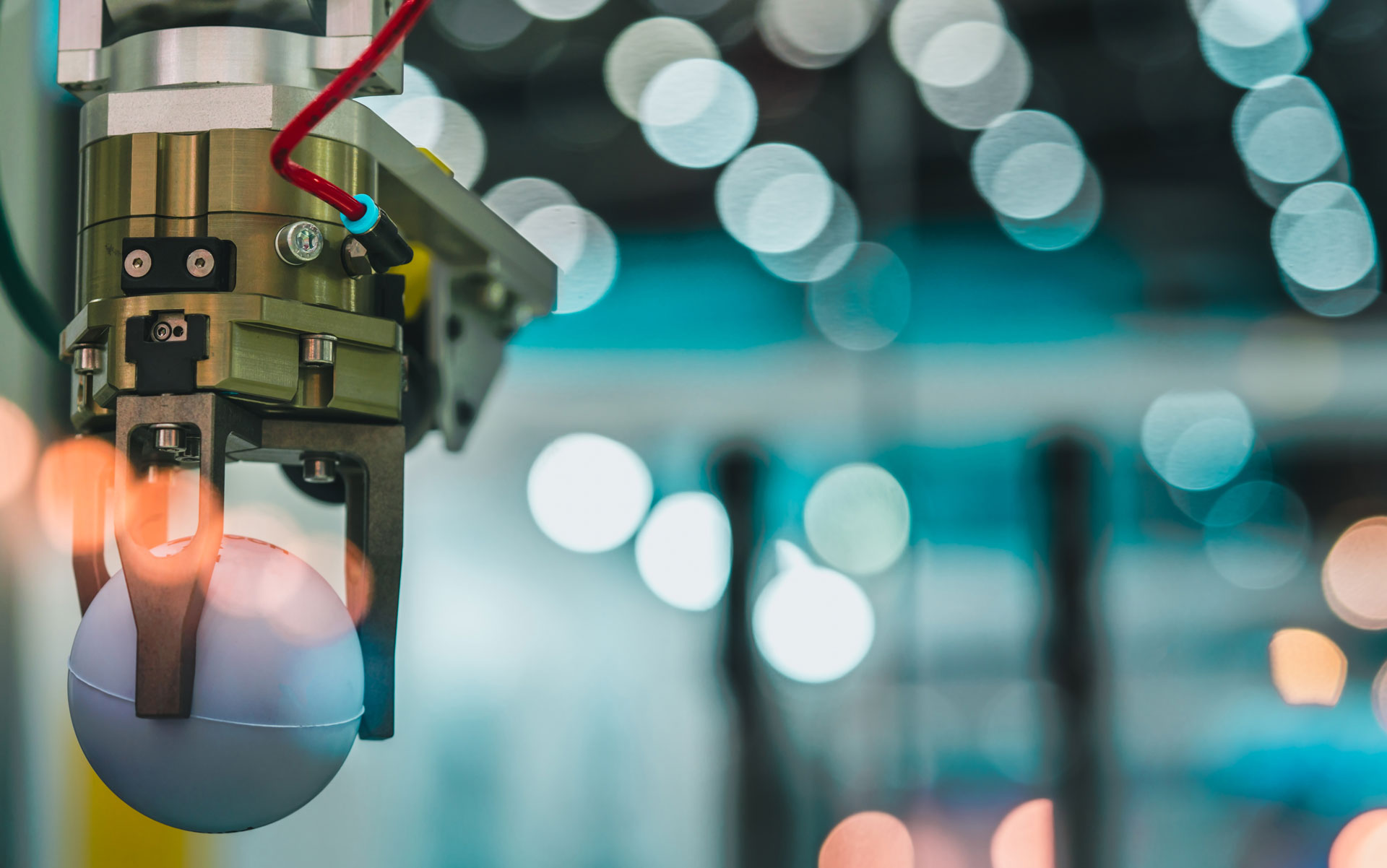Research focus
Our research is focused on the following key areas.
Additive manufacturing and machining
Our research in additive manufacturing and machining covers design, materials and process aspects of additive manufacturing with particular focus on aerospace, biomaterials, defence and mining industries.
Current research projects include:
- Manufacturing of biomedical implants and devices
- Repair and re-manufacture of assets
- Additive manufacturing of wear resistant steels and cast irons
- Novel low-cost titanium alloys for additive manufacturing
- Custom design of alloy structures for additive manufacturing for automotive, defence and orthopedic applications
- Signal processing and control for electrical discharge grinding
- Development of 3D printable polymer matrix composites
- In situ detection and monitoring of additive manufacturing
- Development of cold spray as an additive manufacturing technique
Materials manufacturing and design
Our activities develop lightweight structural and functional materials and improve their processing for applications ranging from automotive to defence to construction industries.
Current research projects include:
- New materials and alloy design for additive manufacturing
- Cast magnesium alloys for automotive powertrains
- Novel nickel-free superelastic and shape memory alloys
- Durability, functionality assessment and repair of embedded systems in multi-functional composites
- Enhanced fire resistance in biodegradable composite materials, derived from fungi (mycelium)
- Functional flexible material systems for sport and worker protection in extreme environments.
Mechatronics and intelligent automation systems
Our focus is on the development and deployment of intelligent automation systems for a wide range of navigation and inspection/monitoring applications.
In terms of navigation applications, our aim is to build the foundations required to develop intelligent safety warning systems for mobile industrial platforms and construction activities. The aim is to prevent mobile industrial platforms from striking/crushing pedestrians and other objects.
In terms of inspection/monitoring applications, the group is working with industry for development and deployment of intelligent systems for food manufacturing, construction and railway operations.
Current research projects include:
- Automated visual inspection and preparation of live animals for meat processing
- Automated inspection of food tray integrity
- Visual intelligence for safe vehicle operation in industrial environment
- Crowd tracking and visual analytics for rapidly deployable imaging devices
- Intelligent solutions for boxed beef trim export enhancement
- Submarine dynamics and control
- Miniature crawling robots for inspection of railway engines and other assemblies
- End-effector design and robot path planning for robotic surgery
Materials modelling and simulation
Our materials modelling and simulation research examines the fundamental relationships between the electronic and atomic structure and properties of molecules and materials to enable rational design of novel materials for industrial and biomedical applications.
Current research projects include:
- Design of advanced multifunctional coatings, including biofouling resistant coatings
- Design of nanomaterials for applications in biomedicine, including metal, oxide, polymer and carbon based nanoparticles and assemblies
- Modelling the response of biomolecules to radiofrequency radiation employed in telecommunication technologies, including mobile phones
- Modelling formation and inhibition of amyloid fibrils implicated in degenerative diseases
- Modelling nanomaterial interactions with biological environments
Biomaterials engineering
Our biomaterials engineering research covers the design, and manufacture of novel biomaterials of titanium-, magnesium-, zinc-, iron-based alloys and their scaffolds, composites, polymers, and protein scaffolds, and assessment for artificial bones, stents, cell delivery, drug delivery, and cell-implant interactions in vitro and in vivo.
Examples of current research projects include:
- Development of metallic orthopedic biomaterials
- Additive manufacturing of metallic implants
- Implant tissue interactions
- Protein interactions with nanomaterials
- Bio-functional coatings
- Injectable scaffolds for neural regeneration and repair
- Nanostructural surface design for antimicrobial purposes
- Multifunctional polymeric materials including 3D bioplotting
Sustainable engineering systems
Our research in sustainable engineering systems is concentrated on urban mobility, smart technology, supply chains and logistics, and sustainable business practice. Our research focuses on eco-efficiency of final products and services generating economic value through successfully addressing ecological impact and meeting human needs while being as resource-efficient as possible.
Current research projects include:
- Modelling passengers crowd dynamics and congestions in major transport hub
- Transition to electric, autonomous and connected vehicles in mixed traffic environment
- Reverse logistics, emergency/ disaster relief logistics and RFID applications
- Life cycle assessment of transport systems, products and services
- GPS /Bluetooth/Wi-Fi application on understanding traffic flow and behavior
- Resource productivity, energy usage of manufacturing and commercial facilities
- Intelligent collision avoidance system for mobile industrial platforms
- Sustainability models and adaptive environmental management for a specific industry
Rapid design and fabrication
We combine rapid experimental methods with computational modelling to design new materials. Our speciality is on surface design and our most active areas are corrosion prevention of structural materials, corrosion resistant and functional materials for a broad variety of industrial applications, including biomedical devices.
Current research projects include:
- New green corrosion inhibitors for automotive applications
- Nano materials for environmental sensing
- Predicting microclimate in aircraft
- Biodegradable metal materials
- Controlling the surface in combined additive/subtractive manufacturing
- Durable friction stir welding
Our impact
We work extensively with partners to solve practical problems facing industries and communities. Our partners include:
- BlueScope Steel
- Ford Motor Company
- Stryker Australia
- Weir Minerals
- Ruag Australia
- Magontec Ltd
- Cook Medical
- St Vincents Hospital
- Peter MacAllum Cancer Centre
- Cornerstone Solutions
- Flexible Drive
- Australian Meat Processor Corporation
- Lockheed Martin (USA)
- Defence Science and Technology Group
- Defendtex
- Siemens
- Signature Orthopaedics Pty Ltd
- Mitsubishi Heavy Industry
- BASF
- BAE Systems
- Romar
Recent research highlights include:
- A spinal implant has been developed and implanted into a patient with excellent outcome. This is part of a program on just in time implants, combining specialised imaging techniques, 3D printing and the accuracy of robotic assisted surgery, to deliver a personalised implant in time for the surgeon to remove the cancer and repair the patient’s bone in the one operation.
- Ultra-fine grain size Ti-Cu alloys with in-situ heat treatment produced by 3D printing with properties matching incumbent alloys has been highlighted in the journal Nature. The fully equiaxed structure means that the alloy is probably less likely to be prone to manufacturing defects and the properties are more consistent in different loading directions.
- Ultrasonic heat treatment in combination with 3D printing has been used to produce the finest grain size in the most commonly used titanium alloy Ti6Al4V leading to improvements in strength and ductility and has been highlighted in the journal Nature Communications. It is also shown that a similar effect can be observed in a Ni-based superalloy
- Design and prototype of a vision-based collision warning system that utilises advanced signal and graphical processing boards to run embedded computer vision and machine learning solutions for human detection, colour segmentation and distance estimation. The on-board processing system is able to detect humans wearing a high visible vest, calculate their distances and generate warnings to the driver indicating potential safety-critical scenario.
- Development of and prototyping of a cattle cleaning station that utilises optical cameras and embedded electronics that run the signal processing operations required to detect possible contamination on livestock hides and applies water to remove those. To automate the cleanliness inspection process, a novel image system is developed that is able to classify different sections of animal hide into clean, dirty and dagged categories.
- An artificial-nose inspired label-free surface-enhanced raman spectroscopy (SERS) fingerprinting approach where spectral data is obtained as a function of sensor surface chemical functionality has been developed in collaboration with researchers from the Department of Materials at Imperial College London. Supported by molecular dynamics modelling, the paper in Nature Communications showed that mildly selective self-assembled monolayers can influence the strength and configuration in which analytes interact with plasmonic surfaces, diversifying the resulting SERS fingerprints. This arrayed label-free platform illustrates the wide-ranging potential of high-dimensionality artificial-nose based sensing systems for more reliable assessment of complex biological fluids.
- Mycelium (Fungi) based composites have shown prospects of these material types to have impressive fire resistance properties. It’s low-cost and environmentally sustainable attributes are also making this novel material attractive for applications in the building and construction industries, particularly with those industries seeking more environmentally sustainable products. The findings of this work have been reported in Scientific Reports and Fire & Materials, where it was one of the top cited papers in 2019.
- Development of socio-psychological based simulation model to study passengers/pedestrians crowd dynamics under normal and emergency conditions at major transport hub.
Research centres and groups
Facilities
Who we are
Manufacturing, Materials and Mechatronics Engineering staff





